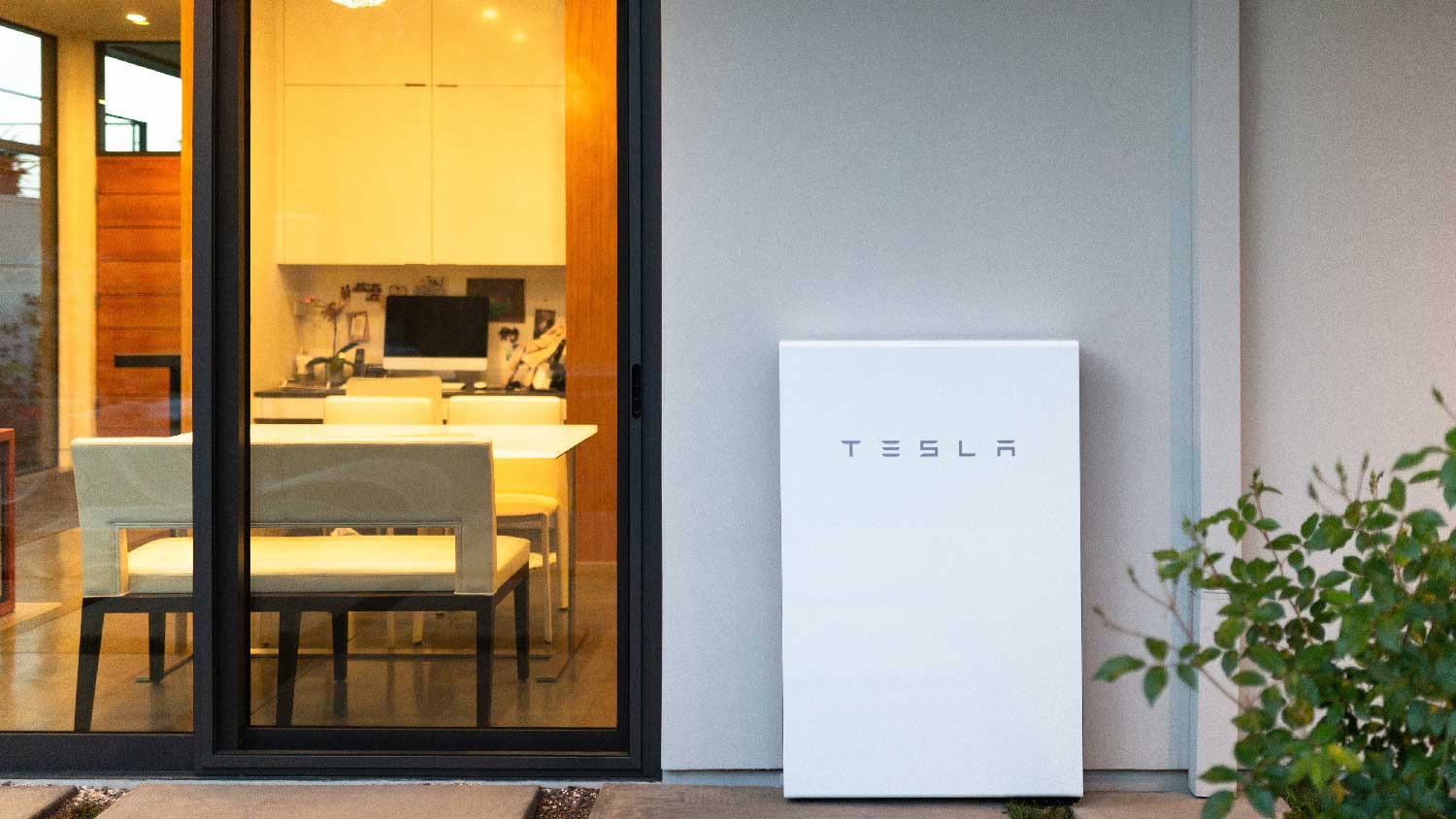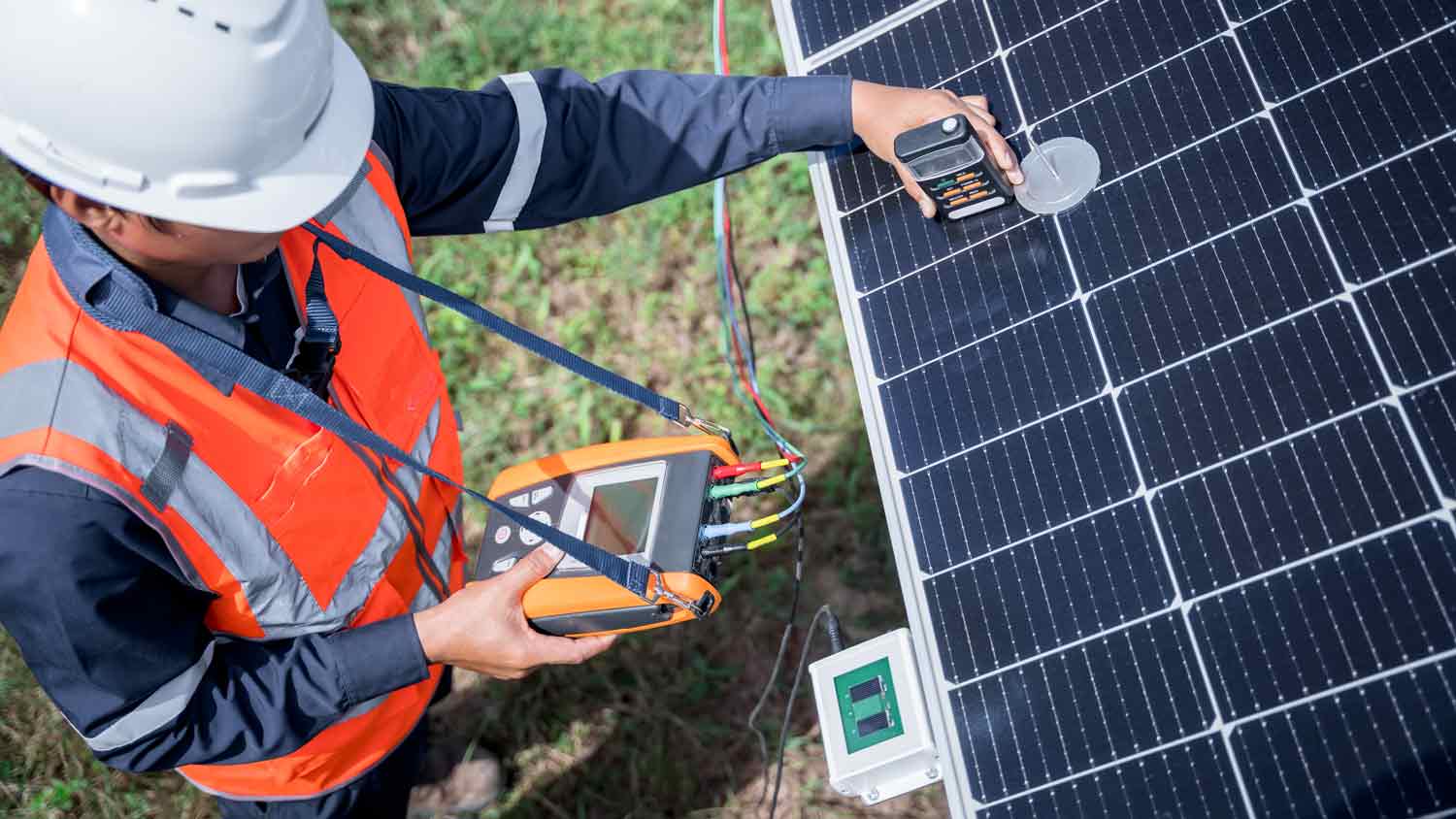
Discover the average solar panel installation cost, key price factors, and expert tips to help you budget for your solar project.
Tesla Powerwall installation costs average $17,000, with most homeowners paying between $11,000 to $30,000 Your total depends on system size, number of units, and installation complexity.


The main factors affecting the cost to install a Tesla Powerwall include permits, labor, and optional features.
Certified Tesla installers and licensed electricians charge between $100 and $200 per hour to install Tesla Powerwalls.
A single Tesla Powerwall is often enough for smaller homes, while larger homes may need two or more units.
Permit fees can range from $100 to $600, depending on your location
This article was created using automation technology and thoroughly fact-checked and edited by an Angi Editor in accordance with our AI policy.
Tesla Powerwall installation cost averages $17,000, with most homeowners spending between $11,000 to $30,000 for a complete system. This price includes the Tesla Powerwall unit, labor, and essential hardware. Costs can vary based on the number of Tesla Powerwalls, integration with solar panels, and your home’s electrical requirements.
Installing a Tesla Powerwall gives your home reliable backup power and can lower your energy bills. Throughout this guide, we’ll break down key cost factors, additional expenses, and ways to maximize your investment.
Several elements influence the final Tesla Powerwall installation cost. Understanding these can help you budget more accurately.
Choosing the right system size is one of the biggest factors in Tesla Powerwall installation cost. The number of Tesla Powerwall units you need depends on your home’s size, your average energy use, and whether you want whole-home backup or just essential circuits.
A single Tesla Powerwall is often enough for smaller homes or basic backup needs. Larger homes or those with high energy demands may need two or more units. Battery capacity, measured in kilowatt-hours (kWh), directly affects both the price and the ability to power your home during an outage. Integrating with existing solar panels can offer additional savings, but standalone systems are also available.
| Number of Powerwalls | Total Capacity (kWh) | Home Size Supported | Cost Range |
|---|---|---|---|
| 1 | 13.5 | Small to medium (1,000–2,000 sq. ft.) | $9,000–$12,000 |
| 2 | 27 | Medium to large (2,000–3,500 sq. ft.) | $16,000–$22,000 |
| 3 | 40.5 | Large homes or high usage | $23,000–$30,000 |
Labor is a major part of the installation cost. Certified Tesla installers and licensed electricians handle the project, ensuring all work meets safety and code requirements. Labor is charged as a flat fee or hourly rate, often ranging from $100 to $200 per hour. Minimum service fees may apply, which include setup, wiring, and system testing. Labor costs can rise based on your region, local demand, or if your installation requires complex wiring, panel upgrades, or difficult access. Labor often represents 20% to 30% of the total Tesla Powerwall installation cost.
Most municipalities require permits for Tesla Powerwall installation. Permit fees can range from $100 to $600, depending on your location and the project’s complexity. Inspections are part of the process to ensure everything is up to code. Permit timelines can sometimes delay the project, which may affect your overall cost if additional visits or adjustments are required.
Optional features can impact your final price. Add-ons like the Tesla Backup Gateway, advanced energy monitoring, or smart panel integration increase both convenience and total cost. Integrating your Tesla Powerwall with solar panels or a backup generator also requires extra wiring and equipment. Upgrading your main electrical panel or adding surge protection and custom backup circuits will further affect your Tesla Powerwall installation cost.
Tesla Powerwall comes with a standard warranty, covering 10 years of operation and performance. Extended warranties or service plans may be available for an additional fee, often ranging from $500 to $1,500. Good warranty coverage can protect you from costly repairs and support the long-term value of your system.
While a Tesla Powerwall can lower your energy bills, there are some ongoing costs. These include your normal electricity usage, which may be offset by the Tesla Powerwall during peak hours. Homeowners with time-of-use rates or demand charges often see greater savings. Tesla’s monitoring software is included, but additional subscription-based features could add to your costs.
Tesla Powerwall systems require minimal maintenance. Annual inspections or software updates are recommended and may cost $100 to $300 per year if handled by a professional. Battery health checks and diagnostics can also add to your yearly expenses.
Sales tax applies to both the Tesla Powerwall unit and installation services in many states, ranging from 5% to 10% of the purchase price. Some regions have additional taxes or fees for energy storage systems, so it’s important to check with your installer about local requirements.
Adding a Tesla Powerwall may increase your homeowner’s insurance premium, particularly if your policy requires extra coverage for battery storage. Expect costs to rise by $50 to $200 per year, depending on your insurer. Always notify your insurance provider and confirm that your system is fully protected.
Some homeowners consider installing a Tesla Powerwall themselves to save on labor. Let’s compare the costs and risks involved. DIY Tesla Powerwall installation cost includes the unit price (about $8,000 to $9,000), plus materials, mounting hardware, and specialty tools. You might save on labor, but you’re responsible for permits, inspections, and ensuring all work meets code.
DIY installation requires advanced electrical skills, Tesla-specific certifications, and strict safety measures. Tools such as heavy-duty drills, wire strippers, voltage testers, and protective gear are essential. DIY projects can take several days, with significant risk of mistakes, code violations, or voiding the Tesla warranty. For most homeowners, hiring a certified pro is required for warranty protection and safety.
Deciding whether to repair or replace your Tesla Powerwall depends on the issue, system age, and warranty status. Common repairs include software updates or fixing minor hardware faults, which can cost $300 to $1,200. Replacing a major component or the entire unit is much more expensive, with new units costing $9,000 or more installed.
If your Tesla Powerwall is under warranty, many repairs are covered. If it’s out of warranty or has lost over 50% of its storage capacity, replacement is often the better investment. Consider the availability of replacement parts and whether certified service providers are accessible in your area.
Installing a Tesla Powerwall can provide both financial and practical benefits for homeowners. While the upfront Tesla Powerwall installation cost is significant, many homeowners recoup their investment through energy savings, especially in areas with high electricity rates or frequent outages.
A Tesla Powerwall can increase your home’s resale value and appeal to buyers interested in energy efficiency and backup power. The payback period varies, but many owners see a return in 7 to 12 years, especially when paired with solar panels or local incentives. Compared to other upgrades, Tesla Powerwall offers unique benefits like safety, reliability, and smart energy management.
You can take several steps to keep your Tesla Powerwall installation cost manageable:
Research and apply for federal, state, and local incentives or rebates
Get multiple quotes from certified Tesla installers
Bundle Tesla Powerwall installation with solar panel projects for package discounts
Schedule installation during off-peak seasons for potential savings
Opt for standard installation locations to minimize site prep costs
Limit optional add-ons to essential features to control budget
Maintain your system to avoid costly repairs down the line
Home is the most important place on earth, which is why Angi has helped more than 150 million homeowners transform their houses into homes they adore. To help homeowners with their next project, Angi provides readers with the most accurate cost data and upholds strict editorial standards. We extensively research project costs to develop the pricing data you see, so you can make the best decisions for you and your home. We rely on reputable sources, including the U.S. Bureau of Labor Statistics, academic journals, market studies, and interviews with industry experts—all to ensure our prices reflect real-world projects.
Want to help us improve our cost data? Send us a recent project quote to [email protected]. Quotes and personal information will not be shared publicly.
From average costs to expert advice, get all the answers you need to get your job done.

Discover the average solar panel installation cost, key price factors, and expert tips to help you budget for your solar project.

Discover the average solar panel inspection cost, what impacts pricing, and how to save. Get expert tips to keep your solar system efficient and safe.

Get a detailed estimate of solar farm costs. Learn about average prices, key cost factors, and ways to save when planning your solar farm project.

Discover the top 10 states with the best infrastructure for solar panels and find out if solar will work for your home.

While solar panels offer many benefits, they can be vulnerable to wild weather. Learn more about how hail can damage your solar panels.

Is your home a good fit for solar panels? It all depends on your roof, sunlight exposure, and energy bills. Use this guide to find out.